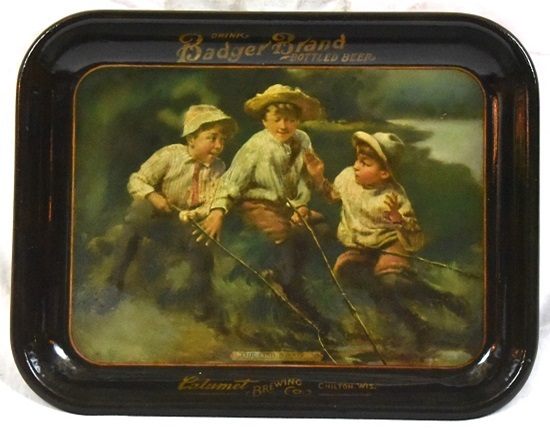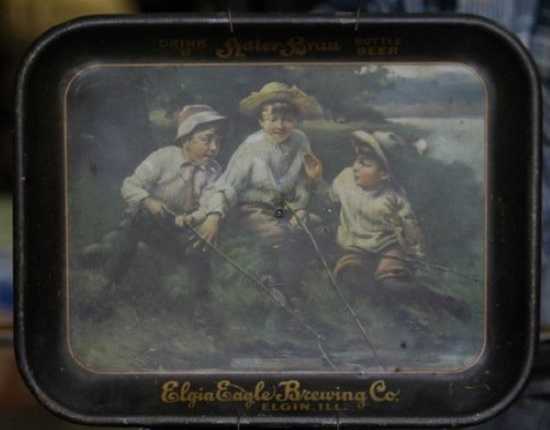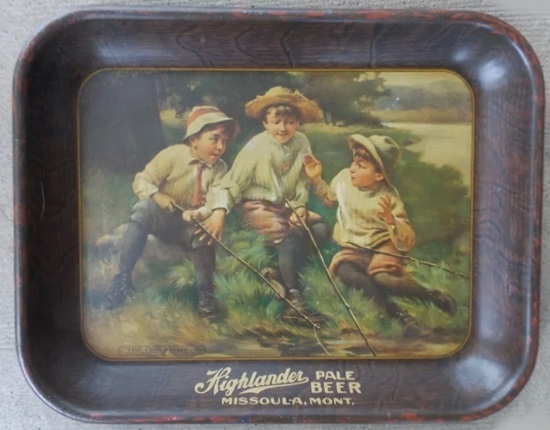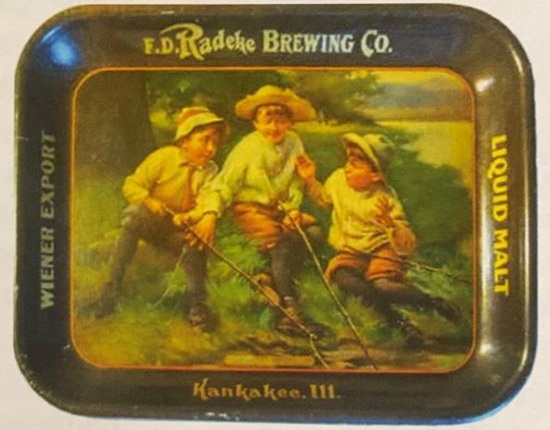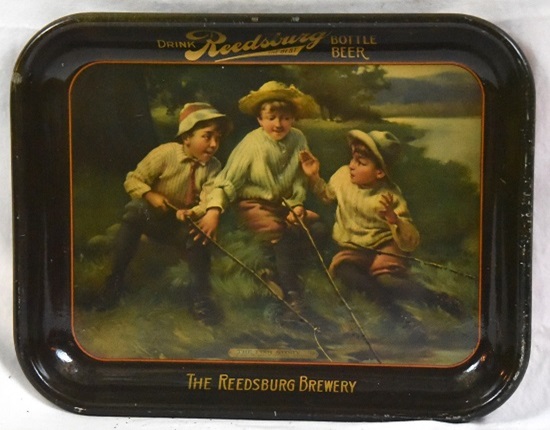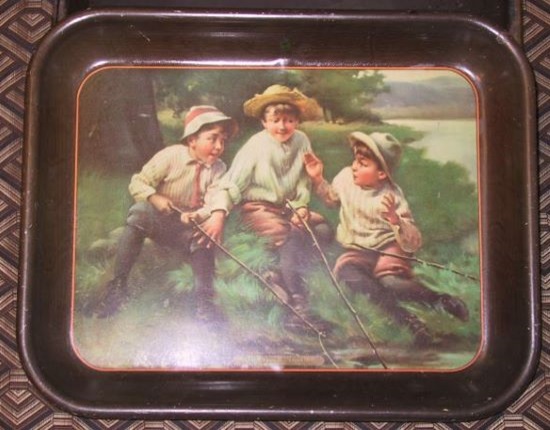The 'Stock' Exchange
American Art Works No. 125 "The Fish Story"
American Art Works No. 125 "The Fish Story"
Date: 1912 to 1915
Size: 13.5" x 10.5"
Type: Pie
Scarcity: Rare
Value: $$$ to $$$$
Condition & Brewer Dependent
Size: 13.5" x 10.5"
Type: Pie
Scarcity: Rare
Value: $$$ to $$$$
Condition & Brewer Dependent


Confirmed Brewer used Stock Trays
Non-Beer Related & Non-Tray Uses
General
Although there are numerous young children among the various designs, “The Fish Story” is the first to feature boys (it is unclear what age “Yama Yama” is supposed to be) as the primary subject. Here they are engaged in the age-old past time of fishing with an equally age-old yarn being told about what one imagines is “the one that got away.” The concept of a fish story comes from the traditional exaggeration by fishermen of the size of fish almost caught and can be traced back to at least the early 19th century. The concept formed the basis of a number of stories and even movies (2003’s Big Fish by Tim Burton being a classic example). Herman Melville’s Moby Dick is, in a convoluted way, a very elaborate fish story with some deeper psychological underpinnings.
This design does not carry an artist’s signature; however, the idealistic or sentimentalized portrayal in this design is reminiscent of Norman Rockwell’s work although not the style. It is feasible it could be an early work of his before he solidified his style as Rockwell officially started his professional career when he was hired as a staff artist for Boys' Life magazine in 1913. Prior to that he went to the National Academy of Design and the Art Students League. He appears to have been producing works during this period with his first major artistic job coming in 1912, illustrating Carl H. Claudy's book Tell Me Why: Stories about Mother Nature.
Rockwell's work was dismissed by serious art critics in his lifetime. Many of his works appear overly sweet in the opinion of modern critics, especially the Saturday Evening Post covers for which he is most famous. This has led to the often deprecatory adjective "Rockwellesque". Consequently, Rockwell was not considered a "serious painter" by some contemporary artists, who regard his work as bourgeois and kitsch but which fit well with the type of advertising designs that Meek and American Art Work favored.
Sahling has a May 1912 entry in his workbook for “The Fish Story, No. 125
Size & Shape and Advertising Placement
Every example we’ve seen of this design is a small oblong (11x14) in the less common landscape orientation with the single exception of an unmarked tin-over-cardboard sign. Rims are black with gold advertising text.
Hager & Price
Hager does not have this design identified in his date of introduction table or in his catalog. Upon checking our records this design was less prevalent than we remembered. Despite that this design does not command much in the way of price; most fail to reach three figures and even the few brewery versions barely surpass that mark. One exception is a Reedsburg Brewery example which reached $1,200 for a better than average example.
Although there are numerous young children among the various designs, “The Fish Story” is the first to feature boys (it is unclear what age “Yama Yama” is supposed to be) as the primary subject. Here they are engaged in the age-old past time of fishing with an equally age-old yarn being told about what one imagines is “the one that got away.” The concept of a fish story comes from the traditional exaggeration by fishermen of the size of fish almost caught and can be traced back to at least the early 19th century. The concept formed the basis of a number of stories and even movies (2003’s Big Fish by Tim Burton being a classic example). Herman Melville’s Moby Dick is, in a convoluted way, a very elaborate fish story with some deeper psychological underpinnings.
This design does not carry an artist’s signature; however, the idealistic or sentimentalized portrayal in this design is reminiscent of Norman Rockwell’s work although not the style. It is feasible it could be an early work of his before he solidified his style as Rockwell officially started his professional career when he was hired as a staff artist for Boys' Life magazine in 1913. Prior to that he went to the National Academy of Design and the Art Students League. He appears to have been producing works during this period with his first major artistic job coming in 1912, illustrating Carl H. Claudy's book Tell Me Why: Stories about Mother Nature.
Rockwell's work was dismissed by serious art critics in his lifetime. Many of his works appear overly sweet in the opinion of modern critics, especially the Saturday Evening Post covers for which he is most famous. This has led to the often deprecatory adjective "Rockwellesque". Consequently, Rockwell was not considered a "serious painter" by some contemporary artists, who regard his work as bourgeois and kitsch but which fit well with the type of advertising designs that Meek and American Art Work favored.
Sahling has a May 1912 entry in his workbook for “The Fish Story, No. 125
Size & Shape and Advertising Placement
Every example we’ve seen of this design is a small oblong (11x14) in the less common landscape orientation with the single exception of an unmarked tin-over-cardboard sign. Rims are black with gold advertising text.
Hager & Price
Hager does not have this design identified in his date of introduction table or in his catalog. Upon checking our records this design was less prevalent than we remembered. Despite that this design does not command much in the way of price; most fail to reach three figures and even the few brewery versions barely surpass that mark. One exception is a Reedsburg Brewery example which reached $1,200 for a better than average example.
Click the Picture to Return to Meek & Beach Stock Catalog Page
